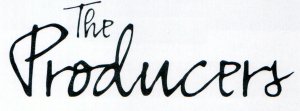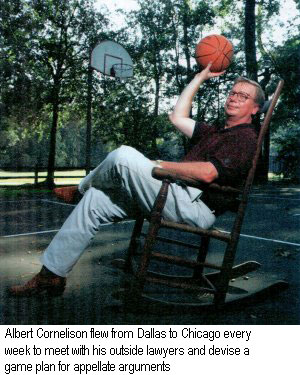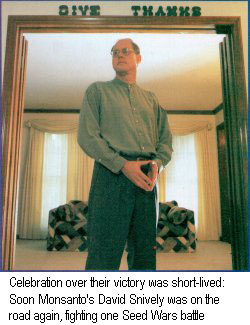Producing a Winner - Backstage at Three of Corporate America's Megasuccesses
 +
+

![]() LBERT CORNELISON, JR., WAS IN HIS FIRST MONTH ON THE job as Dresser Industries Inc.'s new head of litigation when a Chicago jury hit the company with a stunning $54 million verdict in a business fraud case. Obviously, Cornelison wasn't to blame for Dresser's costly predicament. But it was just as clear that Cornelison's career at Dresser would be defined by whether he could free the Texas company from the huge award, which included $50 million in punitive damages. His boss, for one, expected nothing less. Speaking to Dresser's board of directors, general counsel Clinton Ables pledged that the "verdict will never stand. Give us some time, and we will eventually win this case.
LBERT CORNELISON, JR., WAS IN HIS FIRST MONTH ON THE job as Dresser Industries Inc.'s new head of litigation when a Chicago jury hit the company with a stunning $54 million verdict in a business fraud case. Obviously, Cornelison wasn't to blame for Dresser's costly predicament. But it was just as clear that Cornelison's career at Dresser would be defined by whether he could free the Texas company from the huge award, which included $50 million in punitive damages. His boss, for one, expected nothing less. Speaking to Dresser's board of directors, general counsel Clinton Ables pledged that the "verdict will never stand. Give us some time, and we will eventually win this case.
During the next four years, Cornelison directed the litigation through a heartstopping series of twists: from a change in trial counsel to a bet-the-ranch appellate strategy through an apparent judicial victory that nearly went sour. In the end, Cornelison and his client emerged victorious: A new jury handed the plaintiffs a mere $1 in compensatory damages, and the trial court cut the punitives by nearly 99 percent.
If litigation is theater and lead trial lawyers are the stars, then in-house counsel produce, direct, and cast the play. Their art lies in putting together the right elements and creating the right relationship between in-house and outside lawyers. Three of Corporate America's recent megawins show the variety of scripts they might adopt.
"The Team Player"
After getting handed the defense of S.K. Handtool Corp. v. Dresser Industries Inc. as his new-employee orientation, Cornelison says he immediately decided that the company would not and could not settle the fraud case. "Once you're looking at $50 million in punitives, you have to try to clear your name," he explains. The plaintiffs, he adds, "were wealthy individuals who wouldn't be satisfied with a small settlement‹not after this big verdict. They were looking for a windfall." Within two weeks of the verdict, he dumped Dresser's original trial counsel, Mayer, Brown & Platt, and hired a firm with which he was familiar, Chicago's Bartlit Beck Herman Palenchar & Scott LLP.
Posttrial motions did bring the Dallas-based Dresser some relief: The Chicago trial judge, Martin Ashman, cut punitives to $8 million. But Ashman left the $4 million compensatory award in place, upheld the jury's finding of liability, and, in a 37-page decision, excoriated Dresser. His opinion was "scathing," says the plaintiffs attorney, Eugene Pavalon of Chicago's Pavalon, Gifford, Laatsch & Marino. Judge Ashman said Dresser had committed nothing less than theft by deception.
Dresser appealed. Cornelison flew from Dallas to Chicago nearly every week to meet with Philip Beck and his partner, Peter Bensinger, Jr. During long sessions in the Bartlit Beck war room with its 18-foot-high ceilings, strategy for oral arguments and slide shows were outlined and detailed on the walls' large white boards. With one week to go, a critical decision was made. Cornelison explains: "This was a very well-written opinion, [so] I decided, if we started off talking about liability, we were going to lose. We decided that we would not challenge the liability when we went to the appellate court."
Adds Cornelison's boss, Ables: "We had a lot of issues, and it's hard to leave something on the table." But, once counsel starts talking about the twelfth and the thirteenth reasons why the company has been wronged, he says, "you sound like a whiner. The judges turn you off."
The Dresser appeals brief still included objections to the liability findings and punitive damages, says Bensinger. But the oral argument focused solely on the compensatory award. The Bartlit Beck attorneys had recommended this approach, Bensinger says, "but this entailed great risk for Dresser, and it required some spine to be comfortable with that approach."
The panel and opposing counsel seemed surprised that Bensinger and Beck concentrated on damages. The judges reacted positively; six months later, they issued an opinion saying the compensatory damages had been "too speculative," notes Cornelison. The case was sent back for retrial.
But a new trial judge, Kenneth Gillis, soon delivered another blow to Dresser. The appellate court's decision had stated that "the award of punitive damages must also be reversed." Back in court, the plaintiffs attorneys argued that the appellate panel was directing a reversal of the judge's $8 million judgment‹not of the $50 million jury award for punitives. Incredibly, the trial court agreed and revived the jury decision. "We were stunned," says Bensinger. "We were facing $50 million all over again."
Rather than delay the trial by running to appellate judges to complain about the ruling, Cornelison decided to keep the issue in his back pocket. He thought it gave him a "clear shot" at a claim of reversible error, which might be used later if the trial went against Dresser. It was liberating to think that he could get this jury's decision thrown out if he wanted: "It gave me the chance to be extremely aggressive at the trial," Cornelison says.
It also left the second trial to focus solely on compensatory damages. [Click here for Phil Beck's opening statement from the SK Handtool trial] This actually worked to the defense's advantage, says plaintiffs attorney Pavalon. The first trial had focused on Dresser's behavior; the second, on the plaintiffs' claimed losses. The second trial "had none of the real flavor of how badly the plaintiffs were treated," Pavalon says. The plaintiffs had earned a $4 million profit on the sale of the company, but were claiming that they would have gained much more save for the actions of Dresser. At the second trial, Pavalon says, the plaintiffs were forced to prove why $4 million wasn't enough.
Cornelison, Beck, and Bensinger zeroed in on those experts who testified about the plaintiffs' economic losses‹and they ripped them to shreds. Relentlessly, the Beck and Bensinger team pointed out changes in their theories from the first trial to the second. Pavalon admits that the defense's cross-examination "impaired the credibility of the plaintiffs' key witnesses. We lost the confidence of the jury."
The plaintiffs were seeking $4-34 million in compensatory damages in the retrial but in October 1998 a Chicago jury awarded them exactly $1 in compensatory damages. The punitive judgment was still on the table. The plaintiffs were hoping to retain at least $5 million of the $50 million in punitives originally awarded, but in January 1999, Judge Kenneth Gillis reduced the punitives to $650,000.
There were no further appeals. "Our clients were tired of it," says Pavalon. The judgment was paid in February.
"The Gentleman's Agreement"
While Cornelison worked closely with his outside counsel, the script that Chevron Corporation's D. Terrell Sherman followed might be titled "The Gentleman's Agreement." Sherman did things the old fashioned way: He put complete trust in the company's longtime counsel.
In 1995 a San Diego jury ordered Chevron to pay $3.3 million to 22 California dealers who leased gas stations from the company. The plaintiffs claimed that Chevron had designed a fraudulent rent program in a scheme to overcharge the dealers for gasoline. This verdict, which is still on appeal, started an avalanche of claims. A class action was filed on behalf of 4,500 other Chevron dealers; it sought the staggering sum of $1.25 billion for reimbursement of alleged overcharges, plus some $500 million in interest, plus $1 billion in punitives.
Sherman, associate general counsel of Chevron Products Co., says that Chevron decided the case had "no chance of settling" because the plaintiffs "wanted too much." Even settling for nuisance value would have been impossible, he says, given the large number of plaintiffs. Chevron hired San Francisco's Pillsbury Madison & Sutro, a firm that has been working for Chevron since the company was founded about 100 years ago as Standard Oil Company of California. Sherman made this decision even though it was Pillsbury that had lost the case in San Diego and it was Pillsbury that had helped write the policy that the dealers were decrying as fraudulent. Sherman says he considered the San Diego verdict "an aberration" and viewed as assets Pillsbury's involvement in that case and in the policy writing. The firm already knew the issues, he explains. Opposing counsel, plaintiffs attorney Michael Caddell of Houston's Caddell & Chapman, says that Sherman was right in that "Chevron's lawyers learned a lot from the first trial, so they did a much better job in the class action than in the original case."
At the very beginning of litigation, says Sherman, "I like to set cases up with a tribunal of the in-house legal case managers, the outside counsel, and the inside business manager." This tribunal considers the strategy for the trial, and "major strategy decisions are made by consensus," he says. "We get into the cost of the experts, what direction we want to go." Also, the in-house department will act as support staff‹finding documents and coming up with witnesses for the outside lawyers. But after that, Sherman says, he pretty much turned over the litigation to the outside counsel. "You don't have to micromanage," says Sherman, "if you have confidence in the ability of your outside lawyers." Sherman, who's been with Chevron since 1971, put the multibillion-dollar case in the hands of a lawyer with whom he had worked many times before: Pillsbury's Reginald Steer, a specialist in complex litigation.
Chevron declared "meritless" the plaintiffs' charges that the company had withheld details about its pricing practices so that it could fraudulently conceal rent increases in the price of gas. But this claim had been devastating in the San Diego trial, says Sherman, because once "the jury found that we hid the ball on the dealers by not disclosing how we set the rent," it concluded that Chevron must be hiding something else, some nefarious practice, perhaps a scheme to bilk the dealers on gas prices.
In the second trial, Steer took the offensive. He started by explaining why it was reasonable that Chevron did not disclose to the dealers how the company calculated their rent. Simply put, says Sherman, "we didn't want our competition to know the formula." And of course Steer argued that the nondisclosure caused no harm to the dealers. To do this, Chevron had to disclose its formula for calculating rent at trial, Steer says, "but this was not significant [because] by then Chevron had moved to a different structure."
Then Steer attacked the plaintiffs lawyers using their clients' own words. While more than 4,500 dealers were suing, the plaintiffs called only four to the witness stand, and Chevron added only one more to the courtroom testimony. "We thought we could make our point with a handful of dealers," says Steer: If there were too many, "the jury would go to sleep." Steer's cross-examination was designed to show how little these dealers understood their own case. This tactic, he believes, is particularly telling in class actions. In the Chevron trial, Steer says, "not one" of the dealers called to the stand "could explain what they were complaining about."
After a seven-week trial, in March of 1998, a Los Angeles jury rejected the plaintiffs' claims. There was no appeal.
"The Field Commander"
In sharp contrast to Sherman's laissez-faire is David Snively's near total control in Monsanto Company's defense against patent infringement allegations by Mycogen Corporation. Call the script Snively selected "The Field Commander," for he developed the overall strategy with his corporate officers and then issued them to the lawyers, inside and out, under his command.
Mycogen had sued in 1996, claiming that Monsanto had infringed on two Mycogen patents on technology to produce plants that are genetically engineered to be resistant to pests. The suit is one of dozens over the patent, licensing, and contract rights for technology-creating seeds for plants that are resistant to pests or chemicals. A number of companies have numerous patents on various aspects of this emerging genetic technology, and none of them want to lose a foothold in what is already become a multibillion-dollar industry. The Mycogen claim in Delaware against Monsanto was the first of these actions to go to trial.
To handle Monsanto's defense in this trial, says Snively, Monsanto cherry-picked lawyers from different law firms and put them together in a temporary, "virtual" law firm. "Our philosophy," explains the lawyer who has been with the company for 16 years, "[has been to] hire individual trial lawyers and not firms." This practice has become essential in "The Seed Wars," adds Snively, because the company is in many venues fighting multiple suits about the emerging technology. Trials have taken place in Delaware, California, and North Carolina; more fronts are expected to open.
For the first battle with Mycogen, Snively selected as lead trial lawyer John Lynch, an intellectual property specialist with the Menlo Park, California, office of Houston's Arnold White & Durkee. Lynch has handled patent litigation matters for Monsanto since the 1980s. As co-trial counsel, he chose Robert Sayler of Washington, D.C.'s Covington & Burling, nationally known for his trial skills and a former chair of the American Bar Association's litigation section. For local counsel, it was William Marsden, Jr., of Potter Anderson & Corroon, considered one of Delaware's top litigators.
Even with such a high-powered team in place, Snively says, "we very closely participated in and controlled this litigation." Snively himself communicated daily with Monsanto's general counsel, R. William Ide III, whom he says "was intensely involved in the preparation and strategic decisions." In average cases, Lynch says, "in-house legal departments are not as involved. But when the larger, more important intellectual property cases go to trial, there is more attention by the higher echelons of corporate management," he says. It's a "bet-the-company" case, explains Sayler, and "corporate pride" is at stake.
Preparing for trial, "we take the scientists to the counsel and the counsel to the scientist," Snively says. "We show them how we physically split a gene." In teaching the outside lawyers about the technology, the trial strategy was developed: Monsanto believed that the Mycogen patents were invalid and that Monsanto had been the first to invent the disputed technology, Snively says. Monsanto also contended, says Lynch, that it "had empowered the industry with its own technology."
For the trial itself, Monsanto leased a floor of a building near the Wilmington courthouse and created an on-site temporary law firm. Documents were brought in; the team was assembled; standardized presentation software was used by all, says Snively.
The trial featured Monsanto's witnesses describing the development of the company's technology from its inception. The lawyers produced internal records that documented every step of the Monsanto process. Mycogen had far fewer documents on the development of its patented technology, Lynch says. The contrast, he believes, crippled Mycogen's claims.
In February 1998 a Delaware jury not only found no infringement, but also ruled the Mycogen patents invalid.
A few weeks after this victory, Snively says, the company threw a party in St. Louis, where the attorneys and scientists "got together and recounted war stories" and received mock awards for their trial exploits. But the celebration didn't last long. Posttrial motions were made in the case and are still pending. And The Seed War rages elsewhere. Snively has been busy in cases around country both defending and attacking. Last year, overseeing trials meant he spent many more than 100 days away from Monsanto's St. Louis headquarters.
Chevron's and Dresser's joy was unmitigated. Chevron actually threw two parties, one right after the verdict, lunch atop San Francisco's tallest structure, the Bank of America building; and another during the summer at an executive's home in Marin County after the court entered the final decision denying the plaintiffs' posttrial motions. Says Dresser's Ables, who retired in early 1999 from the company (which in late 1998 was merged with Dallas-based Halliburton, Company): "Sometimes justice is hard to come by in this country, especially in civil litigation. But with good counsel and perseverance, you can make the system work."
Bartlit Beck, by the way, received a premium for the Dresser win; Bensinger declined to say just how much. As for Cornelison, there were no promotions. He says, "It's what I get paid to do."
This article is reprinted with permission from the July, 1999 edition of Corporate Counsel Magazine © 1999 NLP IP Company. All rights reserved. Further duplication without permission is prohibited.
